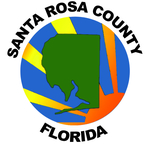
Evacuation | Flood | Surge Zones
Clarifying the meaning behind some confusing "water words"
Water, when it hits the ground, instantly becomes a puddle or rivulet or flood. - Alice Oswald
Though they are often mistaken for each other, Evacuation Zones , Flood Zones , and Surge Zones are very different things that measure very different conditions. So what's the difference? And when do you use them? Here is what you need to know:
EVACUATION ZONES
EVACUATION ZONES are based on elevation (how high above sea level) and among other things, how likely an area is to become inundated by storm surge.
During a storm event, Emergency Management personnel will announce which Evacuation Zones are being asked to or required to evacuate.
An Evacuation Order means that life-threatening conditions are possible in your area soon. This should be taken seriously. You will not be ordered to evacuate unless there is a real threat to your well-being, or you might become stranded where help could not reach you. Don't second guess government and emergency officials. When you are told to evacuate, do so immediately. Your safety, and the safety of others, depends on following instructions. Evacuation saves lives.
Use this map (or click the link below) to search your address and find if you live in a Hurricane Evacuation Zone.
FLOOD ZONES
Interestingly, a home may be in a non-evacuation zone, but still be in a high risk flood zone because of a nearby pond or stream. Alternatively, a home could be in a low risk flood zone, but still in an early evacuation zone because of storm surge projections or high winds.
FLOOD ZONES are federally identified zones indicating a property's risk for flooding at any time of the year, including as a result of heavy or steady rain. These zones are depicted on a community's Flood Insurance Rate Map (FIRM) or Flood Hazard Boundary Map. Each zone reflects the severity or type of flooding in the area. These zones have nothing to do with hurricanes or other emergencies, and everything to do with your property insurance and building requirements.
Search the map to the right to zoom in on an area and determine its flood zone. See the image below to learn more about the difference between each flood zone category.
You should always refer to your County Floodplain Manager for the best Flood Zone information on your property. The SANTA ROSA COUNTY FLOODPLAIN MANAGER can be contacted at 850-981-7029 or you can follow the link below for more information!
SURGE ZONES
SURGE ZONES - Storm surge is an abnormal rise of water generated by a storm, over and above the predicted astronomical tides. Storm surge should not be confused with storm tide, which is defined as the water level rise due to the combination of storm surge and the astronomical tide. This rise in water level can cause extreme flooding in coastal areas particularly when storm surge coincides with normal high tide, resulting in storm tides reaching up to 20 feet or more in some cases.
NOAA (National Oceanic and Atmospheric Administration) and the NHC (National Hurricane Center) use SLOSH models (Sea, Lake and Overland Surges From Hurricane models) to simulate storm surge from tropical cyclone activity and use the results to give an estimate of the maximum amount of water that could be expected if a certain category of storm had maximum impact on a certain area and then they produce the Surge Zone maps with this data.
As every storm is different, storm surge is hard to precisely predict. The maximum potential storm surge for a particular location depends on a number of different factors. Storm surge is a very complex phenomenon because it is sensitive to the slightest changes in storm intensity, forward speed, size (radius of maximum winds-RMW), angle of approach to the coast, central pressure (minimal contribution in comparison to the wind), and the shape and characteristics of coastal features such as bays and estuaries.
Evacuation Zones | Flood Zones | Surge Zones
Even though these are all water related words, they do not have the same meaning. Thus it is important to understand how each (evacuation zone, flood zones, and surge zones) apply to you and your home, during both a storm event and day to day.
Here's a helpful guide on when to use which map....
When to check the Evacuation Zone Map :
- Before hurricane season to make sure you and your family are prepared.
- During a hurricane or major storm, to know if you should evacuate.
When to check the Flood Zone Map :
- You own, rent, or are buying a new property and want to determine if you are required to have flood insurance.
- You refinance or get a mortgage.
- You need building permits for work on your property.
- You live in a low-lying area or near a stream, pond or body of water.
When to check the Surge Zone Map
- Before hurricane season to make sure you and your family are prepared.
- During a hurricane or major storm, to know what the potential surge may be.
For additional information, follow the links in the presentation or check out the links below.
Santa Rosa County BOCC IT/GIS Department
6495 Caroline St, Suite L, Milton, FL 32570
850-983-1840; gisteam@santarosa.fl.gov
Santa Rosa County Emergency Management
4499 Pine Forest Rd, Milton, FL 32583
850-983-5360; Emergency-Management@santarosa.fl.gov
Santa Rosa County Development Services
6051 Old Bagdad Hwy, Suite 202, Milton, FL 32583
850-981-7000
FEMA - Flood Map Information
National Hurricane Center